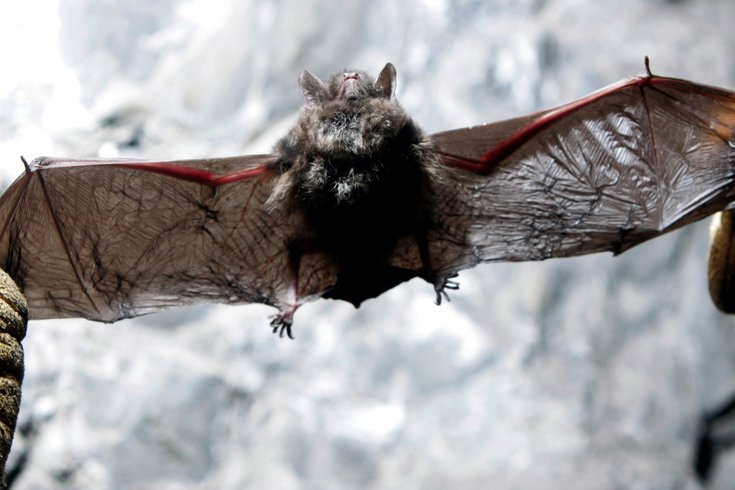
April 07, 2015
 Mike Groll/AP
Mike Groll/AP
In this Jan. 27, 2009 file photo, Scott Crocoll holds a dead Indiana bat in an abandoned mine in Rosendale, N.Y. There are more bats in caves first struck by white-nose syndrome, giving researchers a glimmer of hope in the scourge that has killed millions
The northern long-eared bat, a common bat species in Pennsylvania, has been listed as “threatened” by the U.S. Fish and Wildlife Service, a result of a fungal disease called white-nose syndrome that is wiping out the species.
The value of the ecological services bats provide has been calculated at more than $22 billion annually in the U.S., $292 million of that in Pennsylvania, said Penn State University bat expert Michael Gannon.
The syndrome was discovered in a cave in upstate New York in 2006, then traveled to Pennsylvania. It would have a major impact on agricultural practices, necessitating use of more pesticides, Penn State University bat expert Michael Gannon told the Pittsburgh Post-Gazette.
Bats are voracious feeders on insects and the decimation of bat populations removes an important control on mosquitoes and other insect pests.
Bats, in general, provide $22 billion worth of ecological services in the United States annually, including $292 million in Pennsylvania, he said.
The U.S. Fish and Wildlife Service threatened species status will take effect next month. It includes imposing interim environmental rules, including limits on forest timbering, the Pittsburgh Post-Gazette reported.
The wildlife agency plans to take 90 days of public comment on those rules, in hopes of finalizing them by year's end.
Read the full Pittsburgh Post-Gazette article here.